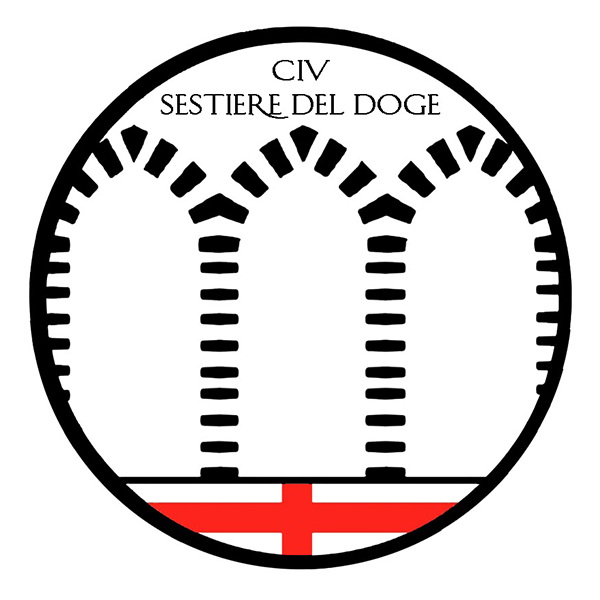![]() CIV CONFESERCENTI
CIV CONFESERCENTI
CIV
Sestiere del Doge
Shop Between the Cathedral and the Goldsmith District


GENOA HISTORICAL CENTRE
The largest CIV (Centro Integrato di Via) in the historical centre of Genoa encompasses a variety of activities, especially along Via dei Macelli di Soziglia, a name that hints at its historical vocation.
This ancient ‘Carrubeo’ (the old term for Genoa’s narrow alleys, or caruggi) was once home to the craftsmen known as ‘indoratori’ (gilders) and was linked to the ‘scutai’ guild, where Saint Catherine of Genoa was born. Don’t miss Vico degli Indoratori, located in the Sestiere di Soziglia, a part of Genoa’s historical centre known for its many crafts shops. This area, once known as Campus Fabrorum (now Campetto), was historically home to goldsmiths, butchers, and poulterers.
In the map of the “Wander, Wonder, Shop” project by Confesercenti, you can search for all the businesses that belong to the 8 CIVs, by name or by product category. You can also explore the individual CIVs and the places of interest in that specific area. There’s a legend below the map to help you figure everything out.

For better visibility, we recommend viewing the map full screen by clicking on the icon in the top right-hand corner.
To search and view the information on the map, click on the icon at the top left.

Select the magnifying glass icon to perform a free search (by name or product category).
Useful info
How to reach the CIV
On foot: Main access points are Via San Lorenzo, Via Garibaldi, Via della Maddalena, Via David Chiossone
By metro: Piazza De Ferrari or San Giorgio metro stations
By bus: Stops at Piazza Caricamento, Piazza De Ferrari, Piazza Fontane Marose
By train: Reachable from Genova Brignole and Genova Piazza Principe stations, connected by metro/bus
By car: pay car park in Piazza Piccapietra or Porto Antico. The nearest motorway exit is Genova Ovest for those coming from the west and Genova Est for those coming from the east.

Contacts
CIV SESTIERE DEL DOGE
Indirizzo: Via Balbi 38 b 16123 Genova
Presidente CIV: Francesca Pescetto
Telefono: 010 2473433
Mail: civsestieredeldoge@gmail.com
Things to see
Here is a list of places of interest related to this CIV, which you can explore further on the map above by looking for the icons of reference:
THINGS TO SEE
![]() The SAN LORENZO Cathedral:
The SAN LORENZO Cathedral:
The church with an unexploded bomb inside is a testament to history. During the Second World War, a bomb crashed through the roof but miraculously caused no further damage. Don’t miss the Cathedral Treasure Museum, which houses the Sacred Bowl, believed by some to be the Holy Grail.
![]() Diocesan Museum:
Diocesan Museum:
In a splendid cloister built at the end of the 12th century, originally serving as the residence of the Cathedral’s Canon’s, you will find f a wealth of paintings and sculptures, fabrics, illuminated manuscripts, silver, reliquaries, musical instruments, and an initial archaeological section, that tell the artistic history of the city. Among these treasures is the Polyptych of St. Bartholomew of Modena (14th century) and numerous altarpieces that showcase the high quality of painting in Genoa from the 16th to the 18th centuries, featuring artists like Perin del Vaga, Luca Cambiaso, Domenico Fiasella, and Gregorio De Ferrari.
The valuable collection is further enriched by the tomb of Luca Fieschi, a unique example of 14th-century sculpture, and the 16th-century Passion Canvases, made of a material that is considered a precursor of the fabric used to make jeans. This rich heritage of artworks attests to the Christian tradition and the grandeur of a Republic that, in 1637, crowned the Virgin Mary as “Queen of the City.”
![]() The fountain in Piazza Campetto:
The fountain in Piazza Campetto:
The fountain in Piazza Campetto, located in the historical centre of Genoa, is the old barchile dating back to the 17th century, which once stood in Via Ponticello, where water carriers and herb sellers went for water. In the early 1900s, the street was demolished to make way for Via Dante and the fountain was moved to its current location.
At this fountain, known as the ‘camalle d’aegua’, the water carriers could fill their buckets without removing them from their heads. The water fell from a higher basin, allowing the carriers to simply fill their buckets under the flow while keeping them balanced on their heads. These water carriers were strong and robust women who, for a fee, supplied water to homes that did not have wells or cisterns.
![]() Adoration of the three kings:
Adoration of the three kings:
In Via degli Orefici, at number 47, above the window of a special knife shop, there is a large marble bas-relief depicting the Adoration of the Three Kings. A plaque reminds us of the probable date of its creation: 1457, by Elia and Giovanni Gagini. It is a splendid example of a street nativity scene that has guarded this Genoese alley for centuries.
![]() The last goldsmiths’ workshops in Via Orefici:
The last goldsmiths’ workshops in Via Orefici:
Do you know what a goldsmith is called in the Genoese dialect? Frävego. This old name remained in use until the 1950s. The shops were primarily located in the central area of La Maddalena and in Via degli Orefici, a street situated between Via Banchi and Via di Soziglia.
The area was originally known as ‘Campetus Fabrorum,’ meaning the blacksmith’s square. Over time, it evolved into ‘fravorum’ and eventually ‘fraveghi.’
Curiosities
Here is a list of places of interest related to this CIV, which you can explore further on the map above by looking for the icons of reference:
CURIOSITIES
![]() The pomegranate tree:
The pomegranate tree:
At number 2, if you look up to the first floor, you’ll notice a pomegranate tree that has taken root in an unusual manner. Since the 17th century, the building has been famously known as the Pomegranate Palace. Legend has it that as long as the tree thrives, prosperity will grace the city of Genoa.
![]() Slaughterhouses of Soziglia:
Slaughterhouses of Soziglia:
Via dei Macelli di Soziglia owes its name to its historical association with slaughterhouses. The origin of the word ‘Soziglia’ remains uncertain, but research suggests that it comes from the Latin ‘sus’ (pig) and ‘eia’, which in the Middle Ages referred to a neighbourhood. This etymology is due to the presence of slaughterhouses and butchers in the area.
![]() Half-Gilded Candelabra:
Half-Gilded Candelabra:
A fascinating tidbit for seasoned antiquarians is that candelabra in Genoa were gilded only on the visible part, as a cost-saving measure.
“Lighting for Genoa” Squares
Here is a list of places of interest related to this CIV, which you can explore further on the map above by looking for the icons of reference:
“LIGHTING FOR GENOA” SQUARES
![]() Piazza Lepre:
Piazza Lepre:
“YOUR BEAUTY” – project by Martina Frattura / Whitepure
Two adjacent squares and their connecting alleys, emblems of Genoa’s historic centre, were observed and studied together for a project with both local and non-local resonance. After getting familiar with the citizens and their opinions on the neighbourhood, the designers chose to use moments of “reflection” to bring new points of view, while facilitating a re-signification of spaces and a re-appropriation of the places.
It is in this spirit that Piazza della Lepre, designed by Martina Frattura with the support of the Portuguese studio Whitepure, is adorned with an illuminated question, while Piazza Cambiaso, designed by Giusy Gallina, is enriched with possible brilliant answers.
Piazza della Lepre, characterised by a fervent nightlife, suggests the integration of a luminous artwork that could foster sociability, without renouncing a moment of inner observation through the question “Where do you see the beauty?”, visible anytime.
English is the chosen language to allow anyone to interact with it, both those who have lived there forever and tourists. The determinative article before the word ‘beauty’ is to emphasise its essence of individuality and necessary transience.
![]() Piazza Cambiaso:
Piazza Cambiaso:
“YOUR BEAUTY” – project by Giusy Gallina
Piazza Cambiaso, so far recognised as the “theatre square”, is home to one of the city’s most fascinating buildings, a multi-purpose artistic hub that has inspired a dreamlike vision of outdoor space. Like an open-air stage, citizens become actors through the projection of their own answers to the question posed in the first square.
As a result of the survey to the local community, the answers shine through to new moments of reflection and wonder, through a direct interaction between the presence of passers-by and the number of visible answers. In addition, a permanent sign gives the square a visible response even in daylight.
The intervention is completed with the design of a way-finding system between the two squares and their accesses, through the projection of luminous lines on the floors and on the entrances to the alleys, which reproduce and imitate the cuts of natural light between the tall buildings of Genoa’s historical centre.
Do you want to join the CIV Sestiere del Doge?
Do you have a shop within the perimeter of this CIV? Would you like to join the group and be part of the project? Contact us and we’ll help you find out how!
CONTACT US
